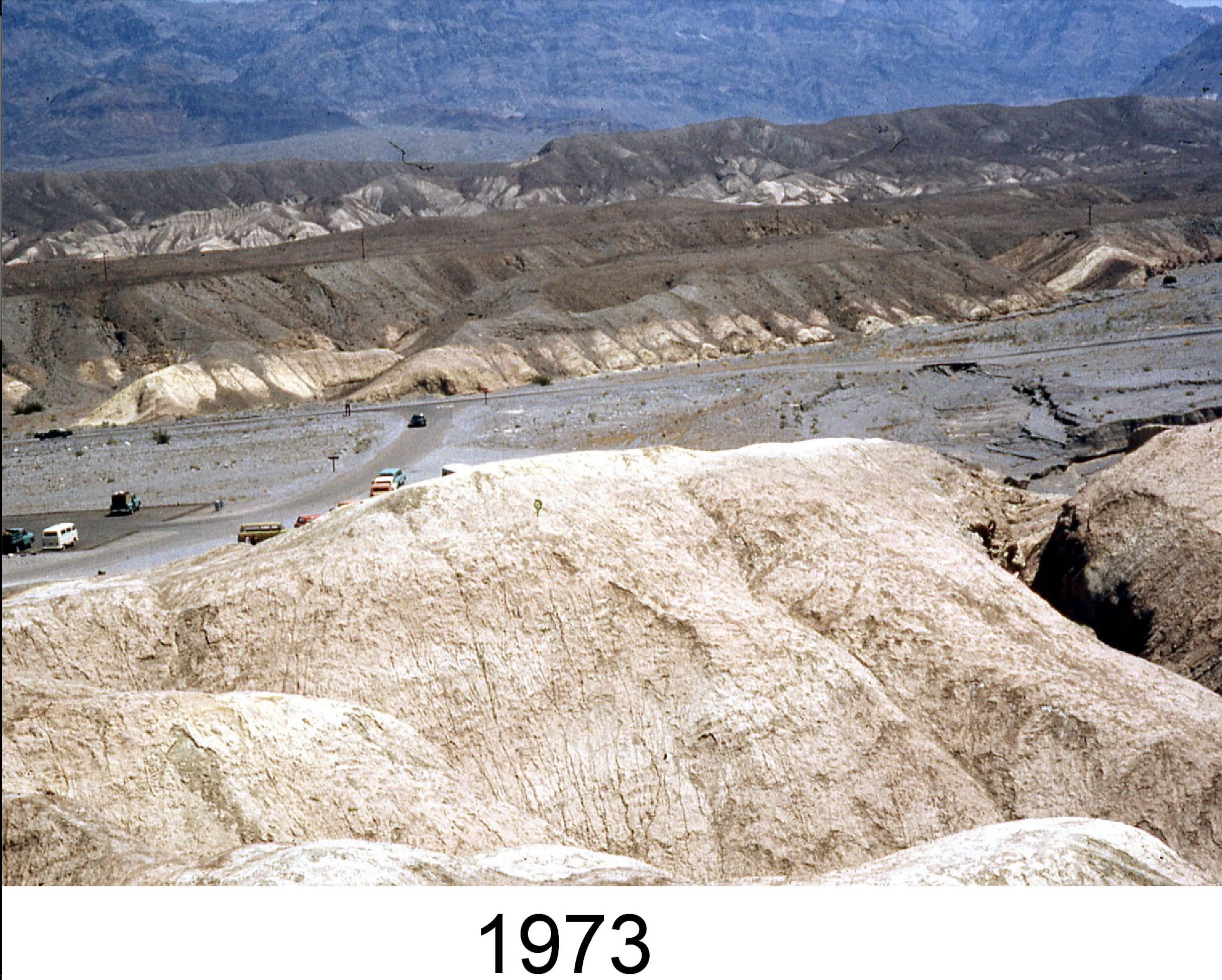Death Valley Flooding 2022: The Futile Diversion Attempt at Gower Gulch
August 7, 2022
Furnace Creek Wash drains a big area—440 square kilometers, an area about equal to that of Lake Tahoe. The wash is dry most of the time, but cloudburst storms can change that in a hurry and chew up buildings, roads, and other infrastructure at the mouth of the canyon, where Furnace Creek Inn sits.
Eighty or so years ago a mining company decided to fix the problem by erecting a berm across the wash and diverting stream flow into the head of Gower Gulch, which at that time drained an area about 100 times smaller.
It is doubtful that the mining company obtained any permits for this work. This was back when you could drive up Natural Bridge Canyon and to the Zabriskie Point viewpoint, and when the Park Service would routinely dynamite the salt crust at Devil’s Golf Course to keep the salt pools open for tourist view.
The berm is visible in a 1948 U.S. Geological Survey aerial photograph. Here’s the full frame:
Here is a closeup of the Zabriskie Point area, where the bulldozed berm is easy to see 7 or 8 years after it was built:
The berm was just south of the road up to Zabriskie Point. There is no trace of it left now owing to road grading and flooding. The current parking area (which may have been ripped up in this month’s floods) covers most of where it was. Note the small streams that had already formed across Furnace Creek Wash just south of the berm, heading for the newly blasted cut into Gower Gulch.
In 2005 NCALM flew a LIDAR survey of this area under a grant obtained by Noah Snyder of Boston College. Here is the same area. Note how much more erosion there has been at and upstream (southeast) of the diversion point.
The view east from up by the Zabriskie Point overlook is interesting. Here are two: one shot in 1973 by Bob Norris, and the other in 2017. The deep shadowed cleft at right is uppermost Gower Gulch, where floods send some—but not all—of their water.
For more information about Gower Gulch, see Geology Underfoot in Death Valley and Eastern California.






